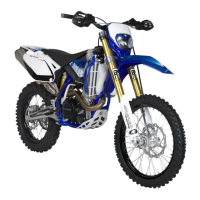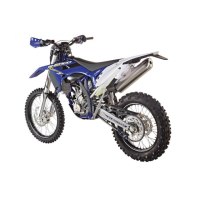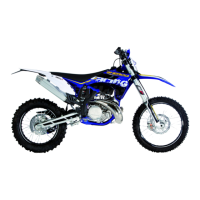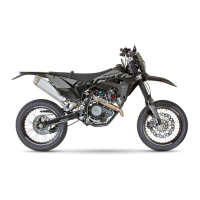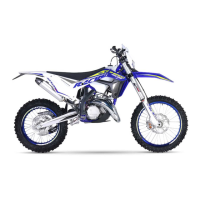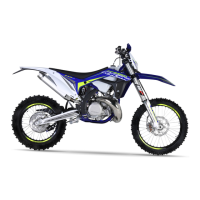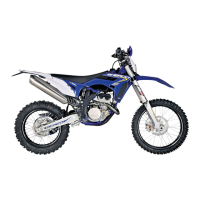Do you have a question about the SHERCO 50 SE and is the answer not in the manual?
Record the vehicle's serial numbers, they are located as shown.
Check specific fasteners for tightness after the first or second hour of use.
Essential guidelines for operating the motorcycle safely and responsibly.
Explanation of various symbols indicating safety, hazards, and operational requirements.
Details on how to find and understand the vehicle's identification numbers.
Locating the chassis number engraved on the steering column.
Locating the engine number engraved on the crankcase.
Diagram and list of the main physical components of the motorcycle.
Detailed measurements and specifications for different motorcycle versions.
Specifications for front and rear tires for Enduro and Supermotard models.
Technical details for the front suspension, including oil type and travel.
Technical details for the rear suspension, including spring rate and length.
Specifications for the front brake system, including disc size.
Specifications for the rear brake system, including disc size.
Detailed engine specifications including type, bore, stroke, and gearbox.
Detailed specifications for the carburetor, including jet sizes and needle settings.
Wiring diagram showing the electrical connections and components.
Chart detailing connectors, their functions, and color codes for auxiliary lights.
List of recommended lubricants and fluids for various vehicle components.
Detailed operation of fuel, clutch, throttle, gear shift, and starting controls.
How to use the speedometer, set wheel size, and battery type.
Essential checks before riding, break-in, fuel, and engine start/stop procedures.
Instructions for adjusting the front and rear brake levers and pedals.
Procedure for adjusting the clutch lever free play.
How to adjust the engine's idle speed using the carburetor screw.
Procedure for adjusting the throttle cable slack on the carburetor.
Checking transmission oil, coolant, front/rear brake fluid and pads.
Maintenance for air filter, spark plug, and carburetor.
Adjusting steering, tires, chain tension, and lubrication.
Cleaning, storage, lighting maintenance, and periodic maintenance schedule.
Procedure for removing and reinstalling the motorcycle seat.
Diagnosing and resolving problems when the engine does not start.
Troubleshooting engine misfires, overheating, and power loss.
Diagnosing insufficient front or rear braking performance.
| Transmission | 6-speed |
|---|---|
| Fuel System | Carburetor |
| Rear Suspension | Monoshock |
| Front Brake | Disc |
| Rear Brake | Disc |
| Cooling | Liquid |
| Starter | Kick |

